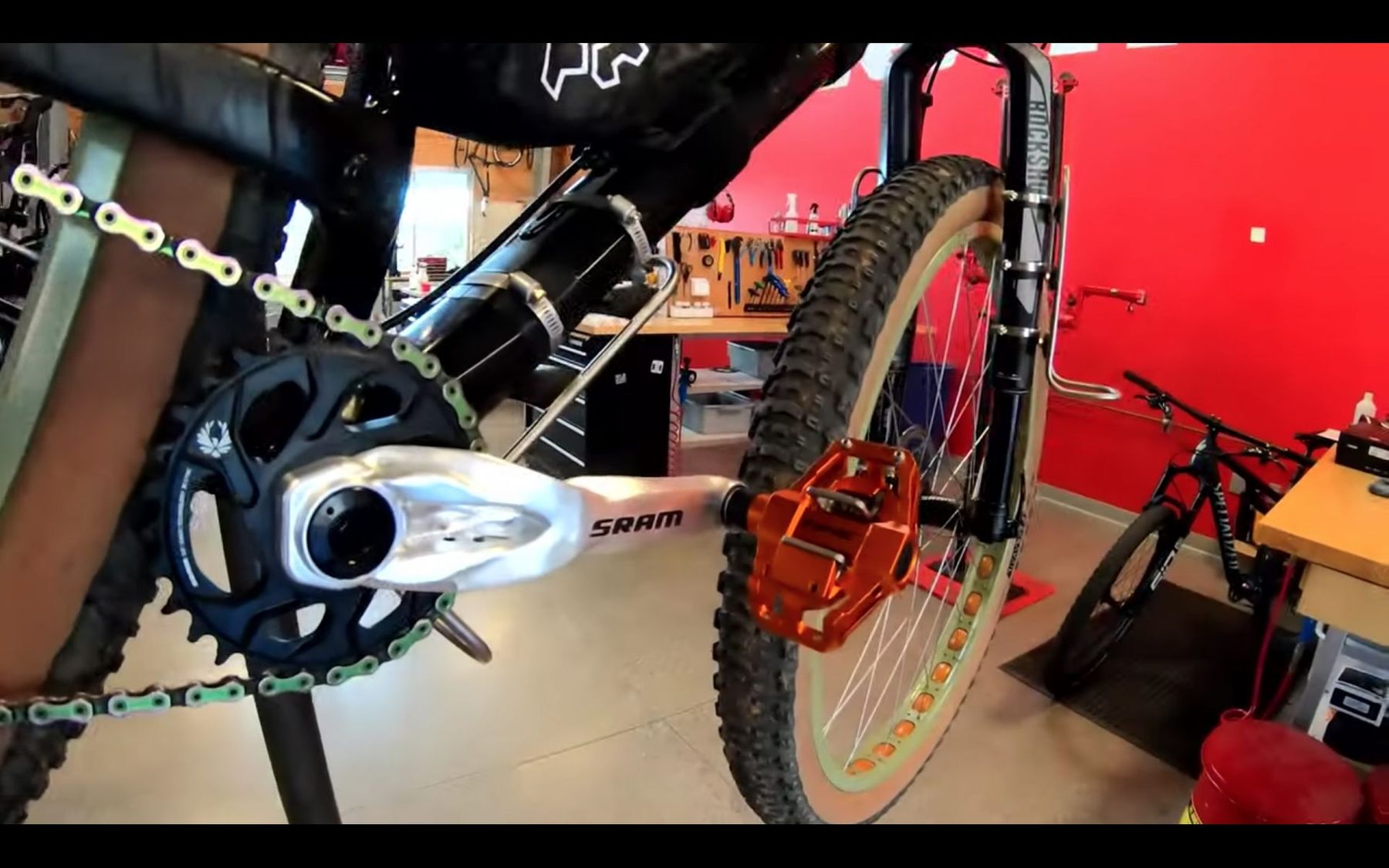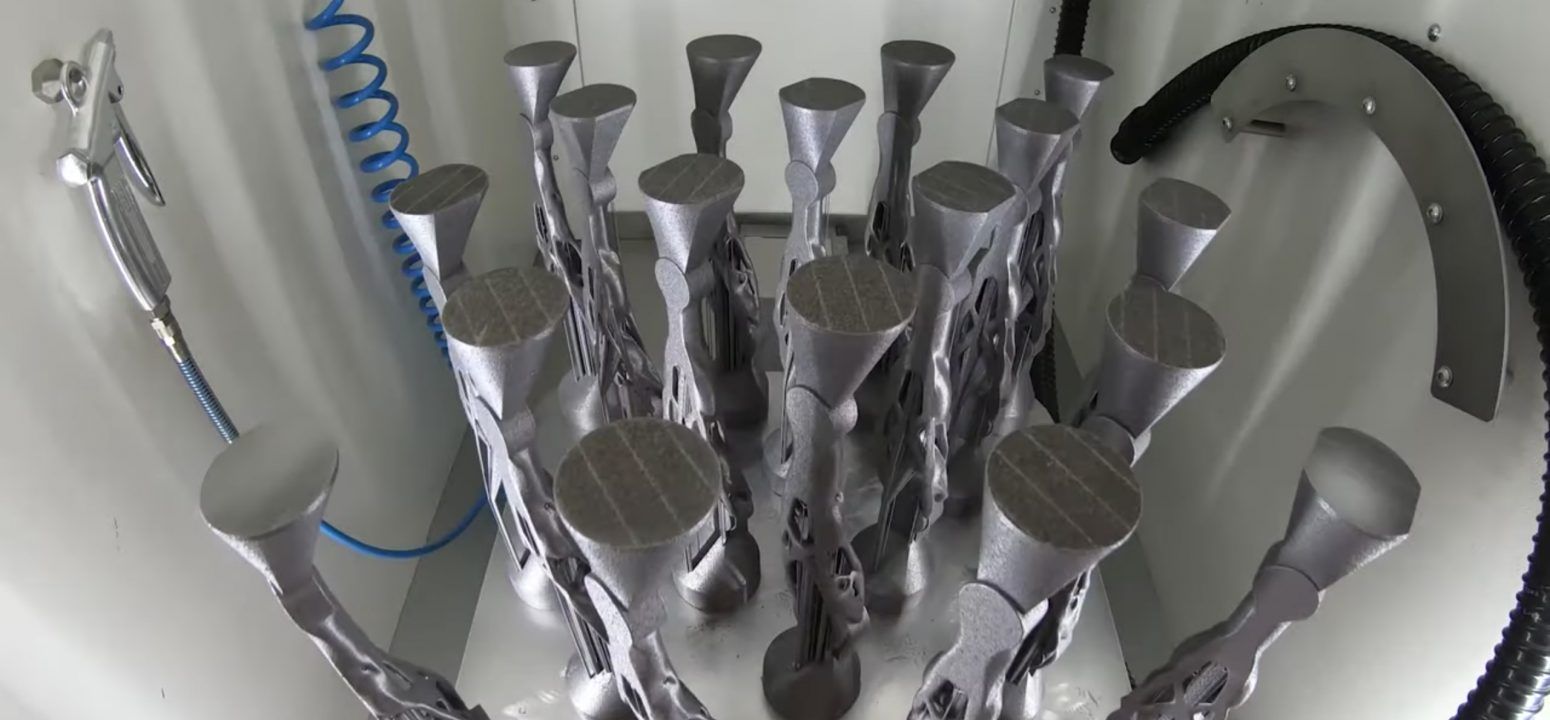A video of a SRAM collaboration with Autodesk, a company specialising in ‘generative design’, gives us a peek into what the not too distant future might hold for us.
Autodesk is a company that combines machine learning and computer power with additive manufacturing techniques to quickly generate prototype design solutions. This video shows they’ve worked with SRAM to see what the technique might throw up as innovative solutions to crank arm development.
Now yes, we could look at the different crank arms shown in the video and pass comment on the weird strut like structures and so on, but that’s not really the big story here. The crank arm is just one component – and a relatively simple one at that. Let’s try and think a bit bigger.
The generative design process – used here by Autodesk, but theoretically open to anyone with the coding know how and access to a supercomputer – would seem to hold a lot of potential. By starting with the outputs – the parameters that you want to achieve – rather than any preconceptions about where you’re starting from, there is a greater chance of getting something truly innovative. Humans do try to do this from time to time – Mathieu Alfano took a ‘maths first’ approach when developing the Motion Ride fork – but it’s hard to get away from all our biases.
Academics have been using artificial intelligence in a theoretical space for years now – as far back as 1997 I was studying Artificial Intelligence and the course included the then emerging field of genetic algorithms and neural networks to consider language evolution. But back then it was all numbers in computers, with data displays being the only ‘real world’ output. Additive manufacturing or 3D printing, plus a massive increase in computer processing power, have moved things along into the physical world.

That said, you still have define what it is you want your algorithm to be aiming for – what are your parameters or outputs? A crank arm seems like a relatively simple object to define – it’s a single piece construction, no moving parts, and fairly straightforward in its interfaces with other components. Having defined the output needed, Autodesk’s algorithm can create thousands of iterations and identify the best fit solutions. The top solutions can be created and tested, and the results feed back in to the algorithm’s assessment of how good any solution was. It’s like breeding cuter puppies – only faster and with a lot less mess on the carpet.
While defining the parameters for a crank arm may be simple(ish), other components with many moving parts and interfaces will be far more difficult. A rear derailleur, or a whole shifting system, for example would take a lot more work. But take out the specific mechanics of hydraulic or cable shifting and you’re stripping some of that complexity back out… We’ve yet to see what impact wireless shifting might have on bike design, and perhaps it’s going to take artificial intelligence based design techniques to make that happen.
But once we crack the modelling of complex systems in such a way that machine learning can offer us drive train solutions, and even whole integrated frame designs, will we like what we see? Will consumers want mathematically optimum solutions, or will preconceptions about what ‘looks’ right hold the market back? Will there be a division between ‘artisan’ human and machine developed designs? Will trailside talk in 2030 be like: ‘Yeah, man, those Gen-Des bikes just don’t feel right. It’s like, on an Art-Bike, you can feel the designer’s soul, man. You know what I mean?’.
Comments (5)
Leave Reply
Post Comment



Hmm.. a lot of expensive toys thrown at designing innovative…. beams! Not sure they have proved anything yet apart from the need to make a nice video to justify spending a lot of money.
There is also the implication in this article that using maths will yield optimal designs .
* only maths
@ThruntonThrasher the designs will be optimal in terms of the parameters/outputs the algorithm is given – but whether that is actually optimal to the user depends on how good your output definition was, and perhaps a little unknown magic that goes beyond what we can define in a way that machine learning can deal with. Which is kind of what I’m asking with the last sentence. Like check boxes in a dating app, can we really distill what we want down to criteria, or is there more to it? Personally, I think the machines might throw up the grain of an idea, but it’ll take human intervention to turn those into designs we want and love.
I’ve been playing with the tools shown in the video. It’s always interesting to see the results, even if I don’t always like them – it usually throws up a surprise. As you mention – setting the criteria is actually the hard part. It almost looks like they decided one of the criteria was to have room for a logo 🙂
Already in that crank design you can see that the material width is larger than expected near the BB, reminding me of the original hollowtech II cranks.
In a way, I’m a bit surprised that this isn’t already used in their engineering workflow – maybe it is and Autodesk particularly wanted a fancy end-to-end use-case video.
Interesting that the final crank in the vid was machined rather than printed, although it could have just been part of the ongoing exploration.
(BTW I’m not sure there’s any machine learning going on here – just maths, but I could be wrong).
If it spits out another bb standard then we know the machines are turning against us.